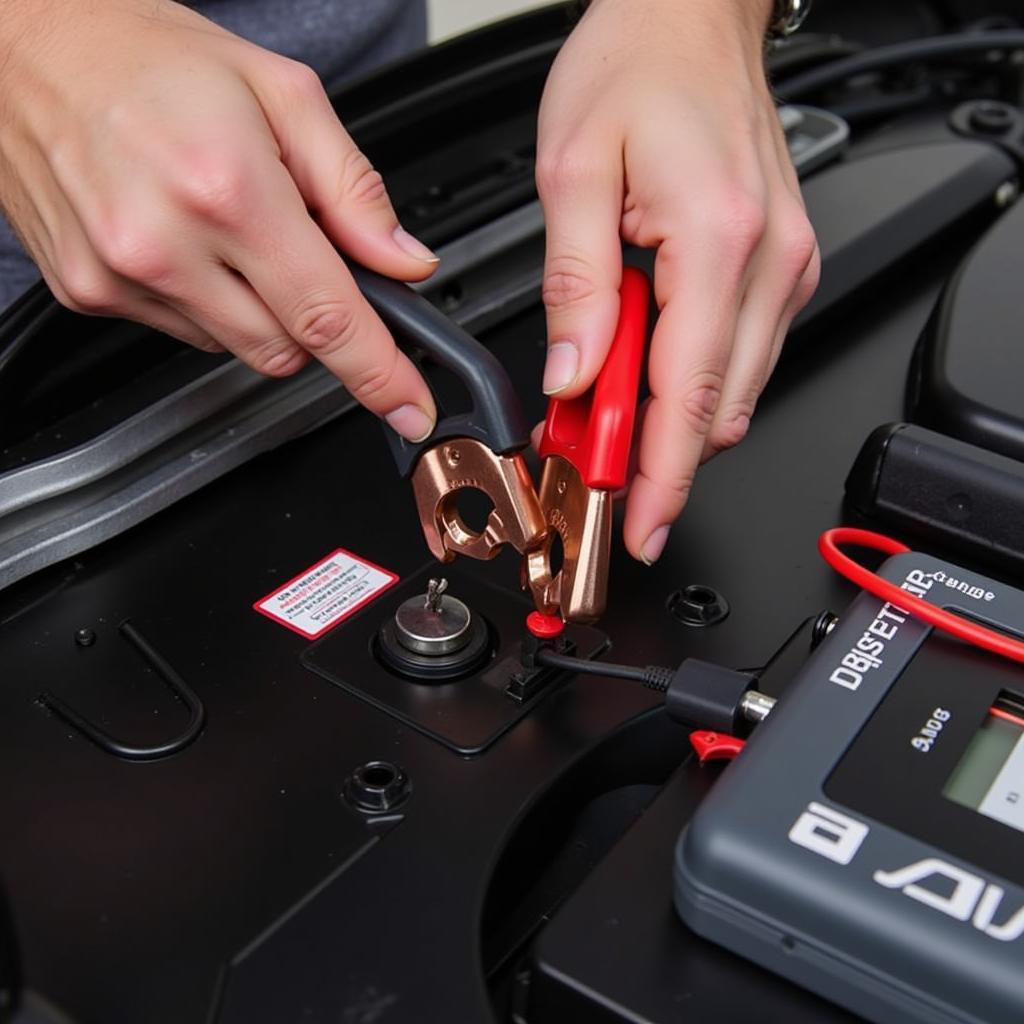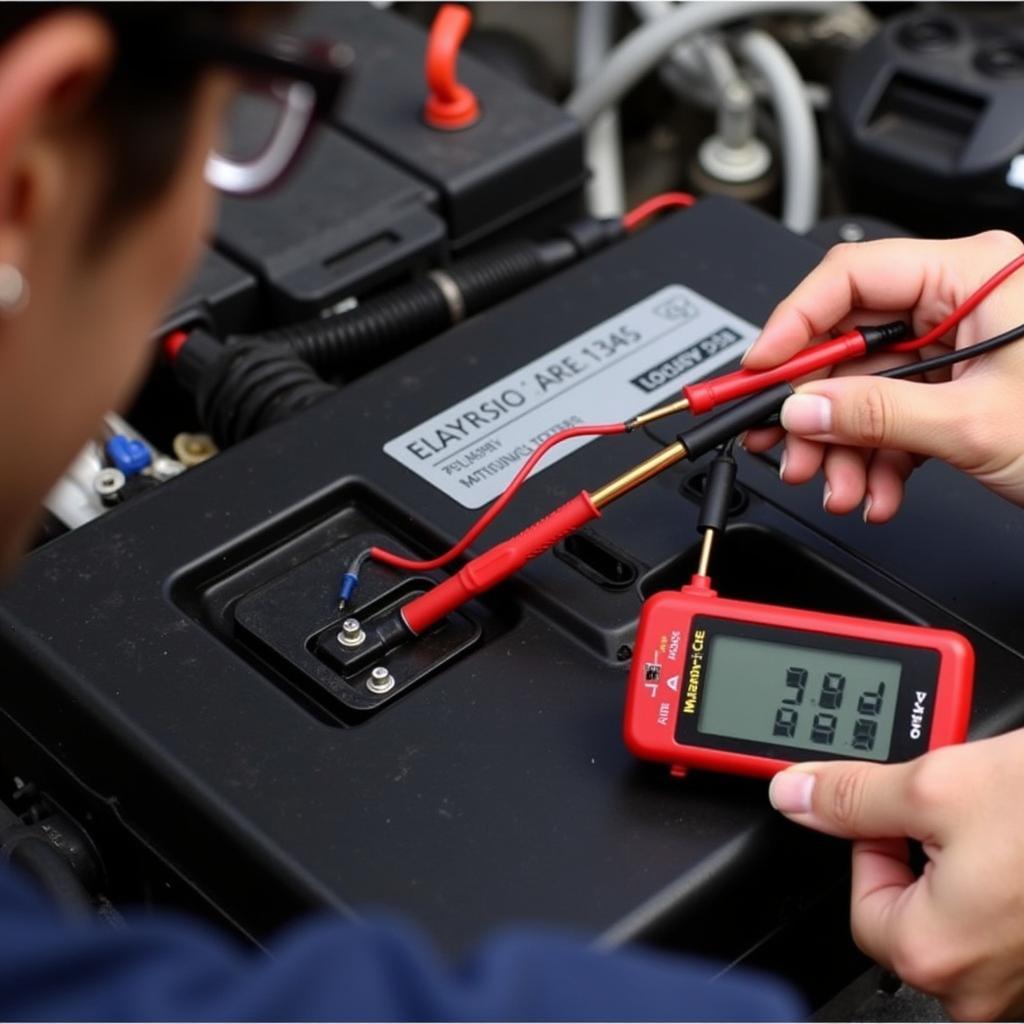A dead car battery is a frustrating experience, especially when your trusty battery tender seems to have given up the ghost. If your battery tender won’t charge a dead battery, don’t despair! This article will guide you through common causes and solutions, helping you revive your battery and get back on the road.
Why Won’t My Battery Tender Charge a Dead Battery?
Several factors can cause a battery tender to fail in charging a dead battery. Understanding these reasons is the first step toward finding the right solution. Sometimes the problem lies with the tender itself, while other times the issue resides within the battery.
Common Culprits: The Battery
- Extreme Sulfation: Over time, lead-acid batteries can develop sulfation, a buildup of lead sulfate crystals that hinder charging. A severely sulfated battery may be beyond the capacity of a standard battery tender to revive.
- Internal Damage: Physical damage, such as cracks or shorts within the battery, can prevent it from accepting a charge. This is often irreversible and requires battery replacement.
- Frozen Battery: In extremely cold temperatures, a battery’s electrolyte can freeze, interrupting the chemical processes necessary for charging.
- Completely Discharged Battery: While battery tenders are designed to maintain a charge, some may struggle to revive a completely drained battery.
Common Culprits: The Battery Tender
- Faulty Wiring or Connections: Loose connections, corroded terminals, or damaged wiring can prevent the tender from delivering the necessary current.
- Incorrect Tender Setting: Some tenders have multiple settings for different battery types and charging rates. Using the incorrect setting can be ineffective or even damaging.
- Malfunctioning Tender: The tender itself may have internal problems, preventing it from functioning correctly.
- Fuse Issues: A blown fuse in the tender can interrupt the charging process.
 Checking Battery Tender Connections
Checking Battery Tender Connections
Troubleshooting Your Battery Tender and Dead Battery
Follow these steps to diagnose and resolve the issue:
- Safety First: Always wear safety glasses and gloves when working with car batteries.
- Check the Battery Connections: Ensure the tender clamps are securely attached to the correct battery terminals (positive to positive, negative to negative). Clean any corrosion from the terminals using a wire brush and baking soda solution.
- Inspect the Wiring: Check the entire length of the tender’s wiring for any cuts, breaks, or fraying. Replace damaged wiring immediately.
- Verify the Tender’s Functionality: Try the tender on a different battery. If it works, the problem lies with the original battery. If it doesn’t, the tender is likely faulty.
- Test the Battery Voltage: Use a multimeter to measure the battery voltage. A reading of 12.6 volts or higher indicates a fully charged battery. A significantly lower reading suggests a problem.
- Try a Different Charging Method: If the battery tender fails, try using a conventional battery charger. This can sometimes revive a deeply discharged battery.
 Using a Multimeter to Test Car Battery Voltage
Using a Multimeter to Test Car Battery Voltage
“A common mistake is assuming the battery is the problem when it’s actually the tender. Always test the tender on a known good battery before replacing your car battery,” advises John Miller, Senior Automotive Electrical Technician at Miller’s Auto Repair.
Solutions for a Dead Battery
- Jump Starting: If the battery has enough charge to accept a jump start, this can be a quick solution. However, it doesn’t address the underlying problem.
- Slow Charging with a Conventional Charger: A conventional charger can deliver a higher current than a battery tender, potentially reviving a deeply discharged battery.
- Battery Replacement: If the battery is damaged or severely sulfated, replacement is the best option.
- Battery Reconditioning (for sulfated batteries): Some specialized chargers can desulfate batteries, extending their lifespan. However, this isn’t always effective.
Conclusion
If your battery tender won’t charge a dead battery, don’t automatically assume the battery is dead. Troubleshooting the connections, the tender itself, and the battery’s condition can often pinpoint the issue. By following the steps outlined above, you can effectively diagnose the problem and get your car back on the road. Remember to prioritize safety and consider professional assistance if you’re unsure about any step.
“Regularly checking your battery’s health with a multimeter and using a battery tender during periods of inactivity can significantly extend its life,” adds Miller.
FAQ
- Can a completely dead battery be recharged? Sometimes, but it depends on the extent of the discharge and the condition of the battery.
- How long should I leave a battery tender connected? Follow the manufacturer’s recommendations, but generally, it’s safe to leave it connected for extended periods.
- Why is my battery tender blinking red? This usually indicates a problem with the connection or the battery itself. Consult the tender’s manual for specific error codes.
- Can a battery tender overcharge a battery? Modern tenders have built-in safeguards to prevent overcharging.
- How often should I replace my car battery? Typically, car batteries last 3-5 years, but various factors can affect their lifespan.
- Is it safe to jump-start a car with a battery tender connected? No, disconnect the tender before attempting a jump start.
- What’s the difference between a battery tender and a trickle charger? The terms are often used interchangeably, but “battery tender” typically refers to a more sophisticated charger with advanced features.

